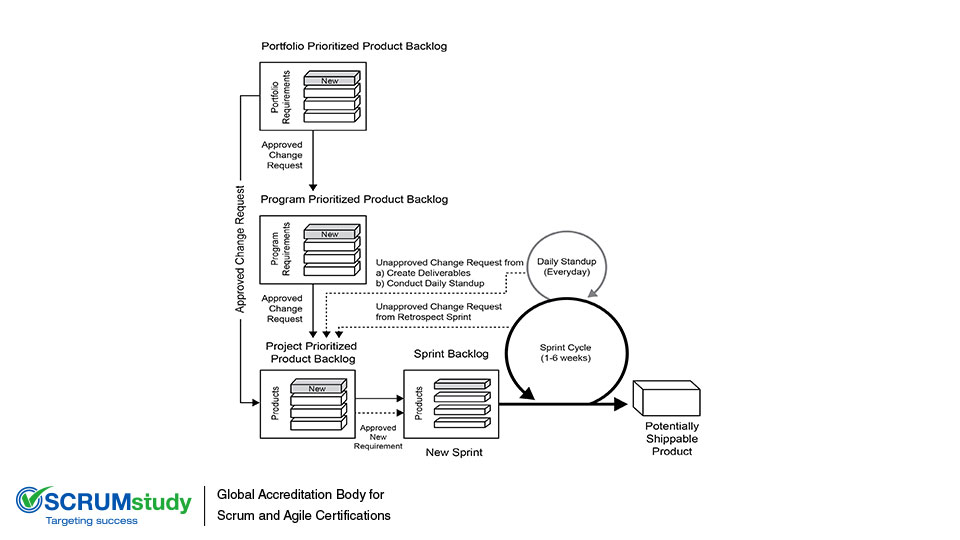Change in Portfolios and Programs in Scrum
Posted by SCRUMstudy® on March 20, 2023
Categories: Agile Product Owner SBOK® Guide Scrum Scrum Guide
Any change that arises in either the programs or portfolios may have a cascading effect on all dependent projects and Sprints. Therefore, it is advisable to minimize changes at these higher levels. If a change is required and all business stakeholders are in agreement to make the change at these levels, the following should be kept in mind.
- It is not recommended to make changes in between two Portfolio Backlog Meetings.
- If the change is minor, the Portfolio Product Owner should secure approval from the relevant business stakeholders (e.g., sponsor, customer, and end user) and then add the requirements to the Portfolio Backlog. Product Owners of the program and project will consider those requirements for inclusion in future Sprints.
- If the change is major, the portfolio efforts along with associated programs, projects, and Sprints need to stop, and a Portfolio Backlog Meeting should be conducted to determine next steps.
- Portfolio Prioritized Product Backlog Meetings (also referred to as Portfolio Backlog Meetings), should be conducted at 4 – 12-month intervals. The frequency and impact of changes to a portfolio largely determine the time duration between two Portfolio Backlog Meetings. If there are several expected changes in portfolio, it is preferable to conduct Portfolio Backlog Meetings at more regular intervals (e.g., 4 – 6 months); but if there are fewer expected changes and if requirements are stable, the duration between two Portfolio Backlog Meetings could be increased (e.g., 9 to 12 months).
In Program
- It is not recommended to make changes in between two Program Backlog Meetings.
- If the change is minor, the Program Product Owner should secure approval from the relevant business stakeholders (e.g., sponsor, customer, and end user) and the Portfolio Product Owner and then add the requirements to the Program Backlog. Product Owners for the project will consider those requirements for inclusion in future Sprints.
- If the change is major, the program efforts along with associated projects and Sprints need to stop, and a Prioritized Product Backlog Meeting should be conducted to determine next steps.
- Program Prioritized Product Backlog Meetings (also referred to as Program Backlog Meetings), should preferably be conducted at 2- to 6-month intervals. The frequency and impact of changes to a program largely determine the time duration between two Program Backlog Meetings. If there are several expected changes in program, it is preferable to conduct Program Backlog Meetings at more regular intervals (e.g., 2 to 3 months); but if there are fewer expected changes and if requirements are stable, the duration between two Program Backlog Meetings could be increased (e.g., 5 to 6 months).
The following figure demonstrates how changes can be managed within the Scrum flow for both portfolios and programs.



